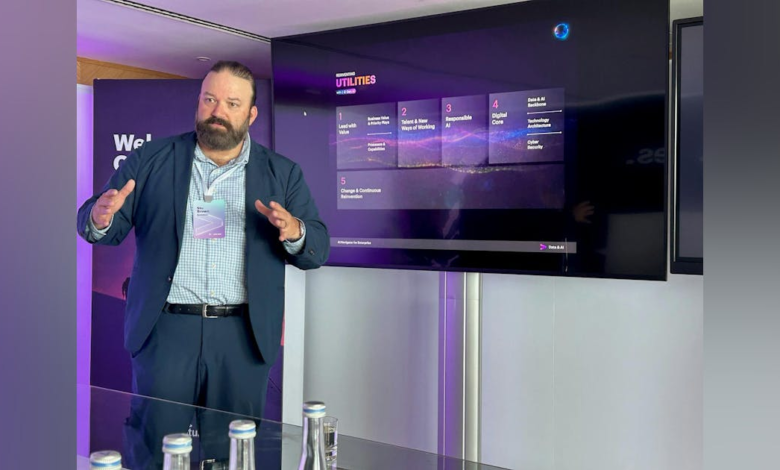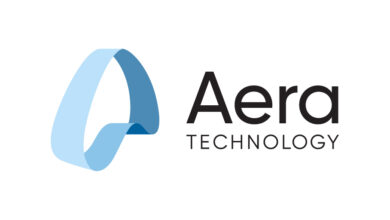Elevating Utility-Scale Data: Using Generative AI to Enhance Grid Operations

Caiscas, PORTUGAL—Call it how you see it, but the electric utility industry is known by a lot of terms, depending on the customer or investor or regulator. Responsive, tenacious, expensive, slow, adaptive, predictable, hard-working.
Generative is not one of those historical words probably ever used to describe the good old electric power company.
And yet that is changing or must change if utilities are going to meet the moment of a mission critical energy transition. Data is king, and data consumption is exploding. If utilities are not careful, some might get swept away or crushed under the momentum of decentralization, decarbonization and digitalization.
Southern Co. CEO Chris Womack is not about to let that happen on his watch. His Georgia-based utility company plans to embrace the future of generative artificial intelligence (Gen AI) and dedicate company-wide resources to meeting the challenge of a new energy age involving deeper electrification of industrial, transportational and residential sectors.
“There will be power,” Womack vowed during an executive panel at Accenture’s International Utilities and Energy Conference (IUEC) in Portugal. To be efficient and responsive in meeting this demand and keep customers closely engaged, “Gen AI has got to be part of how we run the company,” he added.
Womack was hardly alone in making those promises at the IUEC. Echoing the calls for Gen AI to revolutionize data analytics and even “generate” solutions to handle decentralization at a fraction of previous costs were executives from utilities and utility associations around the world, including Duke Energy, EDP (Portugal-based), Eurelectric, ESB (Ireland) and PPC (Greece).
Utilities have deployed traditional AI for quite some time, engaging digital tools for predictive maintenance and machine learning solutions for power plants and grid assets system-wide. The new era of Gen AI, however, promises a software engine that trains on every bit of the data within a system, learns the parameters of what’s useful and not useful, and then acts to create or offer solutions, reports, responses and other ways of delivering a more efficient and creative analysis in a fraction of the time it would take humans to do in the same way.
Humans will still need to be in charge, but this new tool, like fire, has its rewards and dangers.
“Gen AI democratizes data,” Scott Tinkler, global utilities lead at Accenture, pointed out during the IUEC. The knowledge and analysis actionable through Gen AI is “something that historically took years to acquire.”
Now, as new use cases have shown, that can be reduced to weeks and even days. Of course, utilities have always possessed tons of gigabytes of data, but just had no efficient way of weeding out the unnecessary or irrelevant to get what’s crucial and what’s deliverable.
This has not been a strength for many power generation, transmission or distribution firms.
“With many utilities, the data is not as robust,” Tinkler noted. The good news is they can start anywhere and get improvement. “Start exercising it. . . if you want five years of data cleaned up, it will get clean.
“Take the data you have, analyze the outcomes you need and elevate that data,” he added.
This acceleration—some might say runaway train of volume and intensity in data production and capacity—will require utilities to rethink the way their information technology and operations technology sides (IT and OT) operate. Silos must come down, and the normal servers will not get the job done.
Utilities must shape up to build something robust and completely analogue-free.
“You have to have a strong digital core, and you have to be in the cloud,” Accenture CEO Julie Sweet said at the IUEC.
One of the recurring feature offerings during the conference at Cascais was the Gen AI Workshop, manned by Stuart Brown, a senior managing director and Accenture’s global technology lead for its resource industries group. There, Brown and colleague Abhishek Banka, a managing director with Accenture Strategy, showed off some widescreen Gen AI magic.
The demonstrations included a pilot to allow Gen AI to create a customer engagement campaign for a utility, and also showed off how it can offer deeper and responsive interaction with assets on the ground, from substations to control rooms to transmission lines and distributed energy resources such as microgrids.
Brown has stared deeply into the face of Gen AI and is clearly a believer.
“Everything for me from now on is reinvention,” he said. With Gen AI, “we get the information we need that is relevant to the question we’re asking.”
This is a massive opportunity for operational savings, financial and manpower wise, Banka added. And these benefits can come at a time when utilities are trying to figure out how to meet the surging demand of data centers and tech giants, EV charging stations and more electrified industrial and production plants.
Gen AI can go warp speed into data such as facility operations, weather, geographic information systems, siting, cybersecurity threats and so much more, the believers say. The training models are evolving and will only get better with time and, of course, must counter with strong human governance to ensure “responsible AI.”
The concept is so new to so many—who even talked about AI two years ago except first-adopters and other techies—that the everyday skeptic can be forgiven for wondering if Gen AI can truly deliver on such amazing promises.
Brown is a passionate man when it comes to AI, but his response to this is calm and assured.
“We can sense it’s going to deliver the results we’re looking for” based on recent pilots and use cases, he said. “There will still be a lot of testing, but nothing we’ve seen suggests it’s not going to do what we want.”
Utilities, whether they’re ready or not, must embrace the generative instead of the usual reactive.
The momentum is there, the future is now. This next generation of technology can meet utility planners where they are, but not leave them there.



